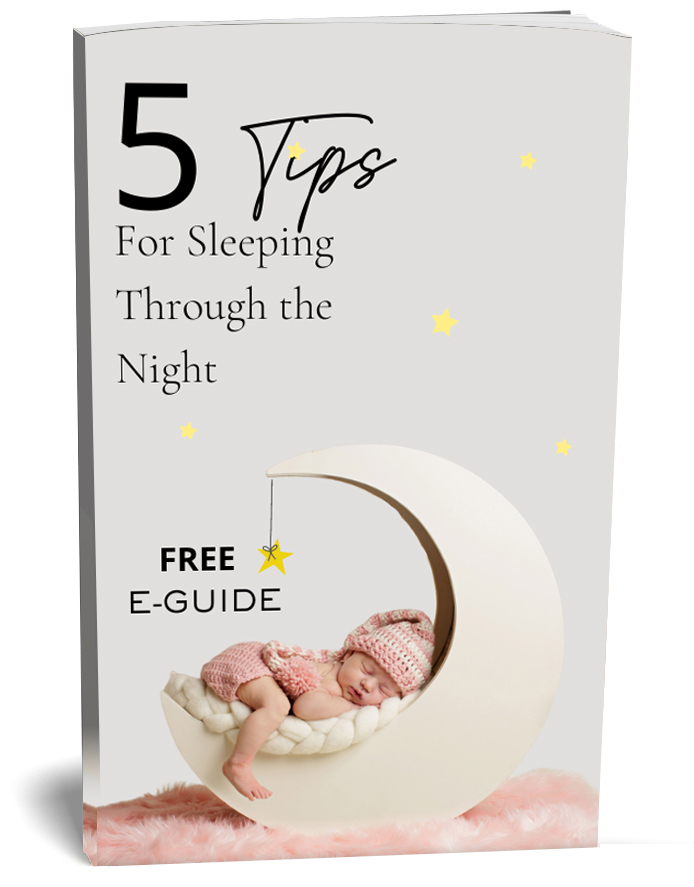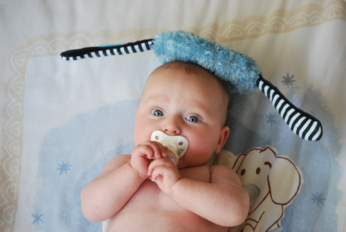One of the strongest bonds is that of a mother and her child. And for a mother what can be more fulfilling than having your baby sleep securely in your arms.
According to the guidelines of The American Academy of Sleep Medicine, babies that are under one year of age require to have at least 12 to 16 hours of sleep per day. And for babies aged 1 to 2 years, 11 to 14 hours of sleep will suffice.
So if most of these naps are taken by your baby in your arms then it won’t leave you enough scope to get your others chores done. So you need to make the transition of getting your baby to nap in their crib.
This change is definitely an abrupt change in your baby’s life so you need to do it as gently as possible.
 Creating the Best Conditions for Your Baby’s Nap
Creating the Best Conditions for Your Baby’s Nap
It’s not easy for a baby to nap during the day due to all the disturbances all around. So it’s imperative that you create the right environment for your baby to nap in.
1. Place the Crib in your Room
It’s a good idea to place the crib in your bedroom beside your bed if you have the extra space. It will be easier for the baby to adapt to a room which is familiar.
This way the change will be less abrupt for your baby. You can consider moving the crib out after a week or so when your baby will be used to sleeping in the crib in your room.
2. Darken the Room
For a baby to grab a sound sleep it’s imperative that the room needs to be well prepared. First of all, make the room really dark. A well lit up room hampers your baby’s nap as they may stay awake and scan the room.
Day or night the room needs to be adequately dark to ensure that your baby has a good sleep.
3. Reduce Noise
A nap during the day time can easily be hampered by environmental noise. Since you can’t do much to stop the noise outside the house so it’s best to take preventive measures inside.
You can start off by placing the crib in a quiet corner of the house that is far from the noise from other parts. You can also place a machine that generates white noise near the windows or door or other places that are likely to generate noise.
4. Prepare the Crib
You need to ensure that the crib your baby sleeps in is properly set up. Read the instruction manual that comes with the crib to set it up accurately. Follow the instructions properly to make sure the crib is ready to house your baby.
Your baby will easily fall asleep in a crib that is clean and comfortable so make it welcoming by getting the right crib mattress. Blankets and pillows must be clean and soft.
This is also necessary to ensure that your baby has strong bones.
Other Steps to Ensure Sound Sleep
Ensuring your baby has a good nap is all a matter of falling into a proper sleep routine. So follow the steps below to make sure your baby has the proper nap routine.
1. Correct Age to Start
In order to get the transition right, you must start at the proper age of your baby. Four to six months of age is the perfect age to transfer your baby from the bassinet to the crib.
The baby can be more easily moved out of the room as the night time feedings are far less frequent during this time.
2. Allow Time to your Baby to Prepare
It’s important to familiarize the baby with their new crib before moving them in. So allow the baby to play in the crib. Ample play time in the crib will enable the baby to get familiarized and feel cozy in his new crib.
So, make sure you follow this play routine at least a week before you actually move them into the crib to nap.
3. Follow a Nap Routine
It’s a good idea to cue your baby in to think that it’s time to take nap. This can be done by following a few simple naptime routines.
Things, like changing his diaper or swaying them while you sing to them near their crib, will let your baby know that nap time is near.
4. Pick the Best Time
Picking the right time to put them down on the crib is crucial for them to fall asleep easily. So keep them busy with various activities as long as they are up. At the first sign of drowsiness start putting them down on the crib. Allow them to fall asleep on their own at first, comfort them if they get too fussy.
5. Settle in the Baby
Make your baby feel secure while laying them down to sleep in the crib. The best way to achieve that is laying them down gently on the crib. Make sure to lower them down feet first, placing them on their bum, finally the head needs to be laid down softly.
This gentle move without any abruptness will ensure your baby snuggle off to a sound sleep. To help them settle in place your hand on their stomach or pat them softly.
6. Don’t Go In and Out of the Room
To ensure a sound nap for your baby it’s important that you don’t stay in the room while they try to nap. Darting in and out of the room or shuffling about inside will distract your baby and indefinitely lower their chances of falling asleep.
7. Feeding Time
Smaller babies need to be fed every two to three hours so it’s important for you to ensure that the baby is not hungry as you put them to sleep. The feeding time might be stretched out so make sure to offer them a feeding right before you try to put them down for the nap.
A well-fed baby will have an uninterrupted nap for sure.
Conclusion
Parenthood comes naturally. It’s not something that can be taught. Each baby is different and so is there ways of adapting to any situation. The parents too faced separation anxiety.
So, following the steps above will make it easier for both parent and baby when it comes to transitioning to the crib.
Author Bio:
Stepheny is a content writer at FeedFond. She’s a loving mother to her two children and is passionate about psychology and philosophy. To read more of her articles, visit FeedFond.com.




















